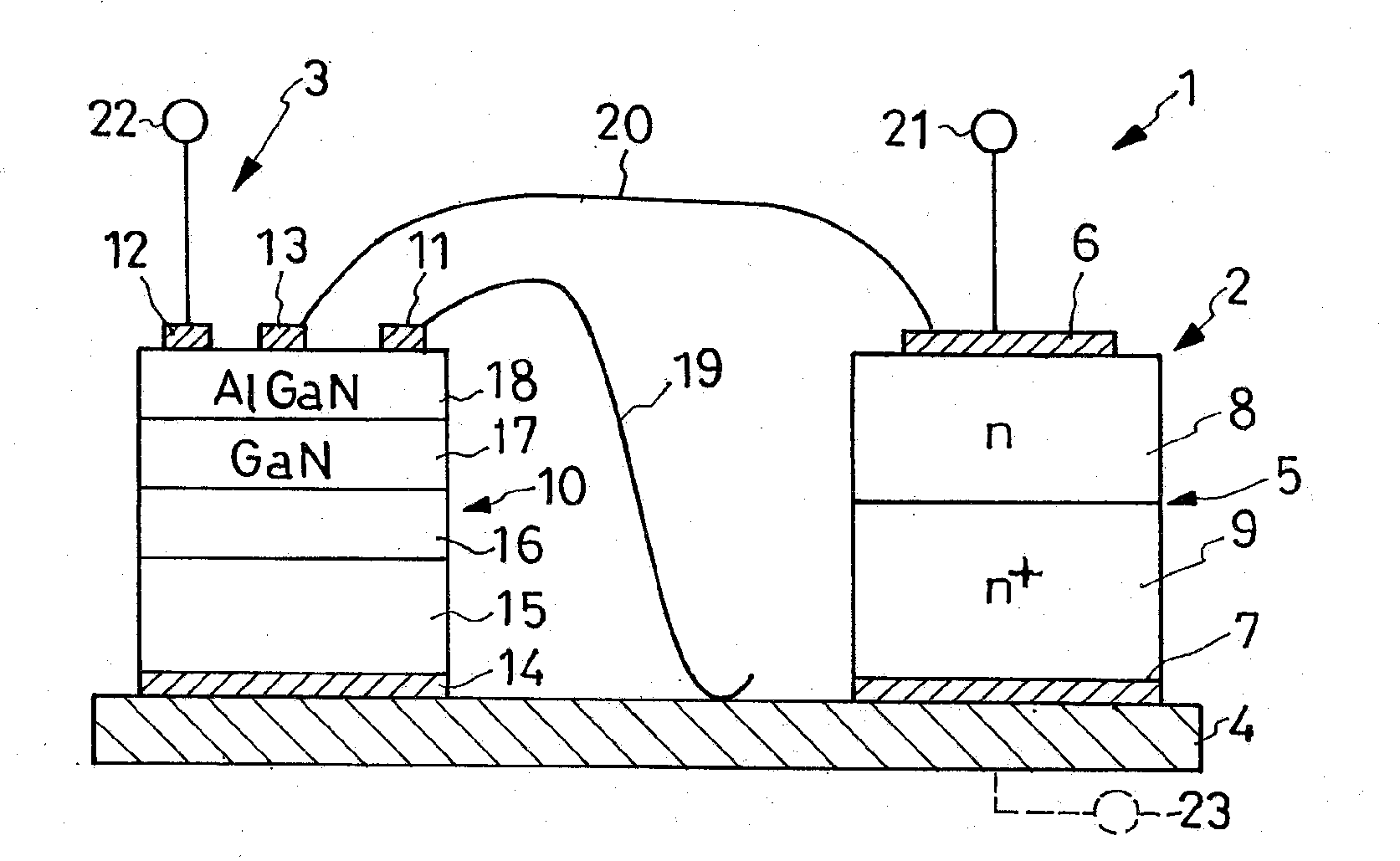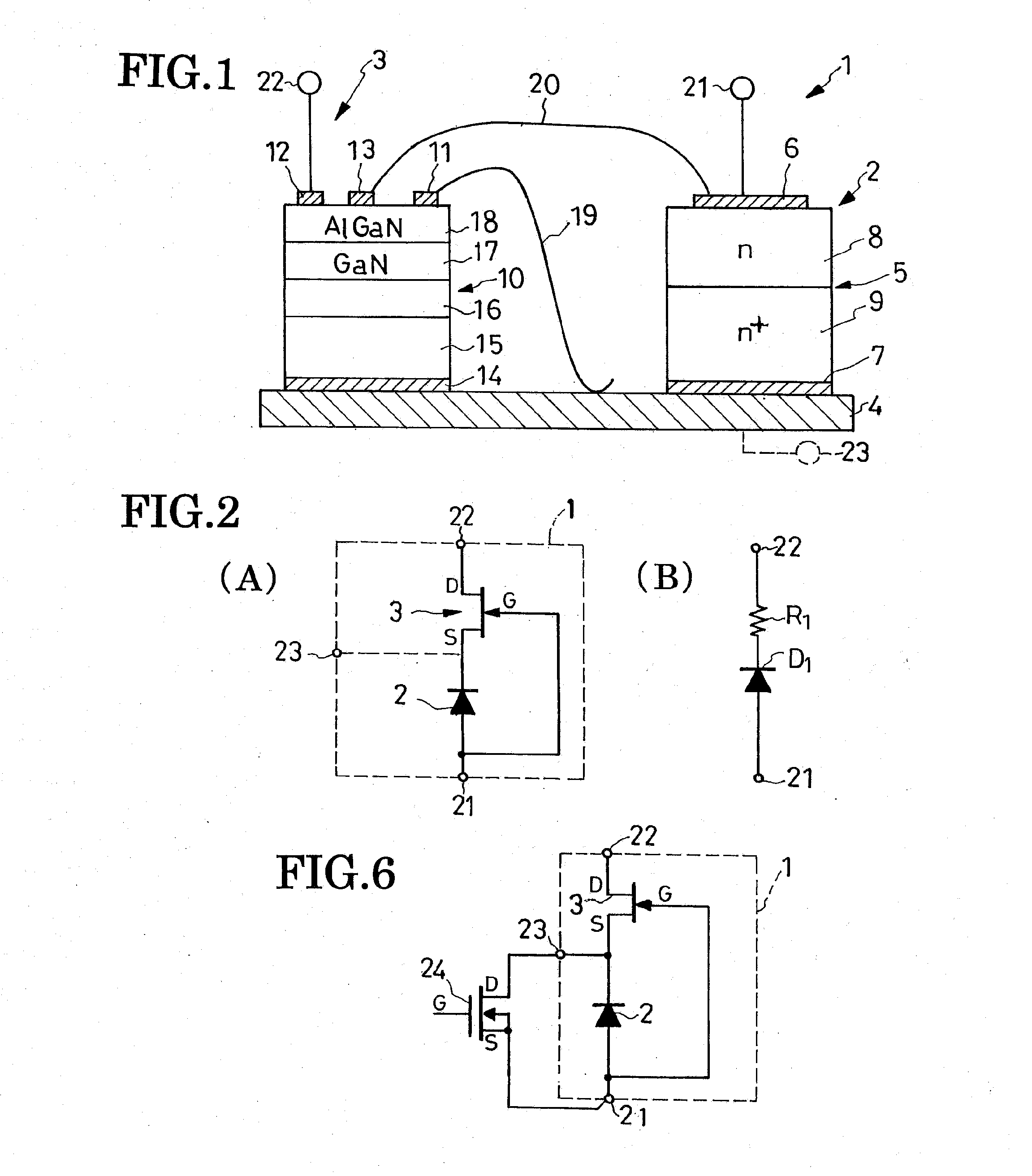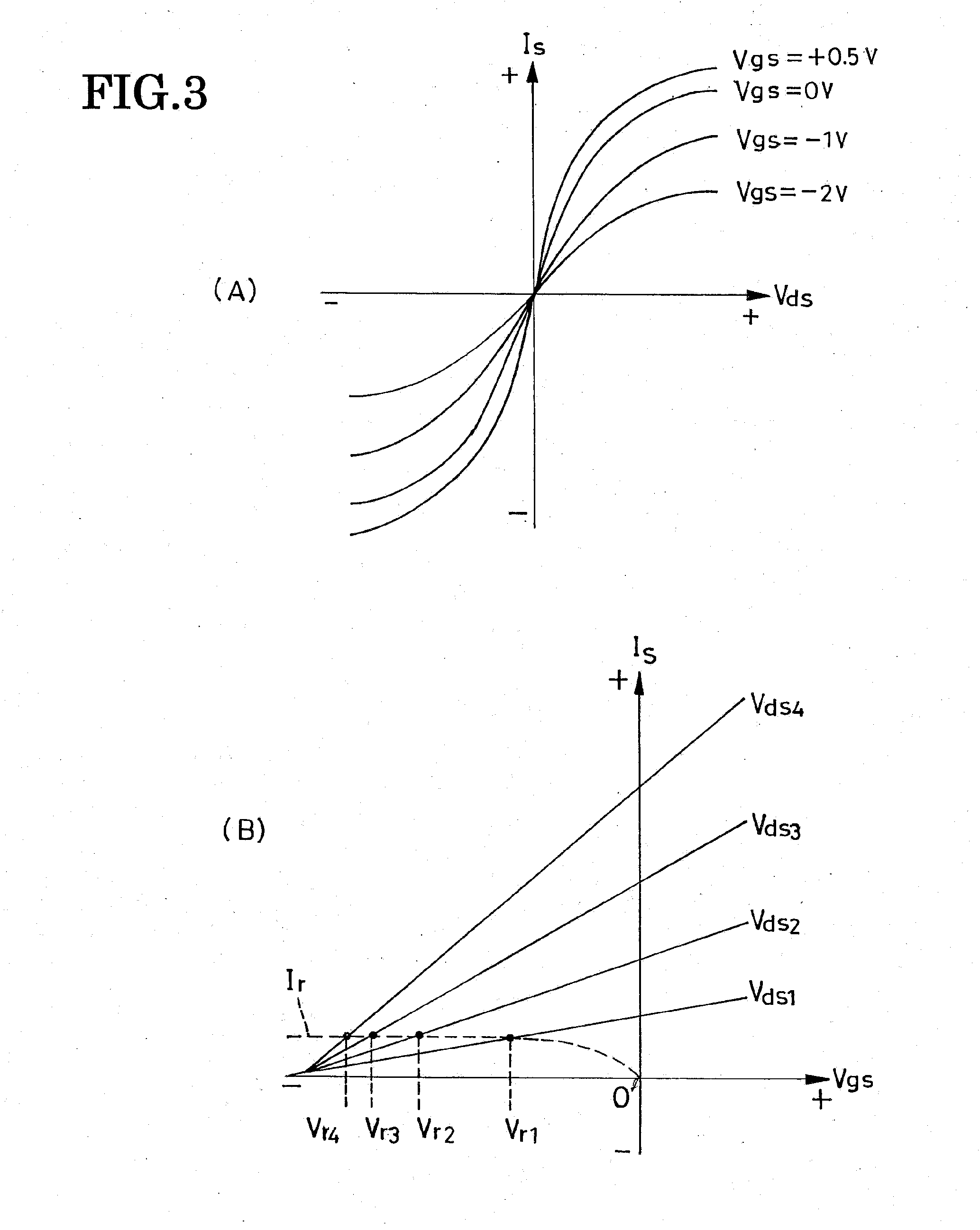Diode-Like Composite Semiconductor Device
a composite semiconductor and diode technology, applied in semiconductor devices, electronic switching, pulse techniques, etc., can solve the problems of low resistance strength of silicon sbd, inability to meet the requirements of low voltage, inability to meet the requirements of applications now under consideration, etc., and achieve the effect of minimal current capacity
- Summary
- Abstract
- Description
- Claims
- Application Information
AI Technical Summary
Benefits of technology
Problems solved by technology
Method used
Image
Examples
embodiment
of FIG. 7
[0066]This second preferred form of composite semiconductor device 1a features a Si pn-junction diode 2a employed in lieu of the Si SBD 2, FIG. 1, of the first described composite semiconductor device 1. All the other details of construction of this device 1a are as previously set forth in connection with the first described device 1.
[0067]The Si pn-junction diode 2a of the second composite semiconductor device 1a has a body 5a of doped silicon between an anode or first electrode 6a and a cathode or second electrode 7a. The silicon body 5a is a lamination of a first semiconductor layer shown as a p+-type semiconductor layer 31, a second semiconductor layer shown as an n-type semiconductor layer 32, and a third semiconductor layer shown as an n+-type semiconductor layer 33, arranged in that order from anode 6a toward cathode 7a. The n-type semiconductor layer 32 is less in n-type impurity concentration than the n+-type semiconductor layer 33. Alternatively, an intrinsic semi...
PUM
 Login to View More
Login to View More Abstract
Description
Claims
Application Information
 Login to View More
Login to View More - R&D
- Intellectual Property
- Life Sciences
- Materials
- Tech Scout
- Unparalleled Data Quality
- Higher Quality Content
- 60% Fewer Hallucinations
Browse by: Latest US Patents, China's latest patents, Technical Efficacy Thesaurus, Application Domain, Technology Topic, Popular Technical Reports.
© 2025 PatSnap. All rights reserved.Legal|Privacy policy|Modern Slavery Act Transparency Statement|Sitemap|About US| Contact US: help@patsnap.com



